Housing Inventory Surges in the Month of April
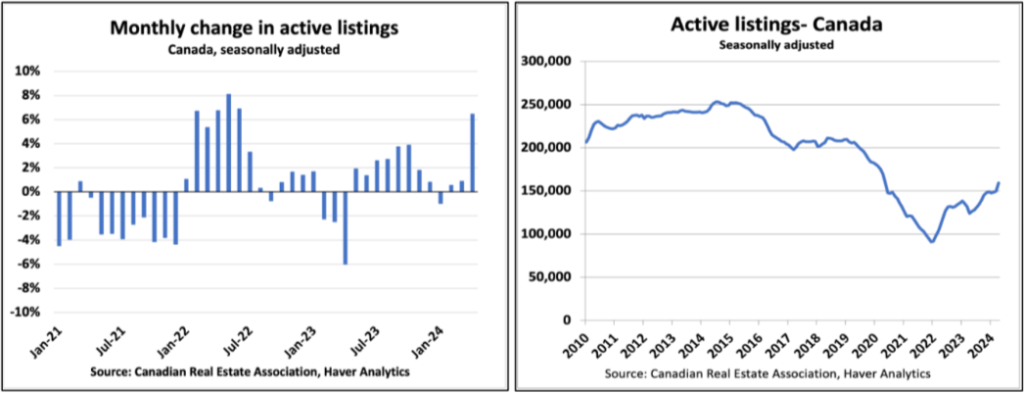
Advertisement: Click here to learn how to Generate Art From Text
A report from Edge Realty Analytics, dated May 2024, has raised concerns about the inventory surges that occurred in Canada in April. The latest housing statistics reveal a significant surge in resale stock across Canada. This signals a significant change in market dynamics.
In April, the number of active listings (adjusted for season) increased by 6.5% m/m. This is the largest monthly increase seen since June 2022. This surge is primarily attributable to Ontario, where inventory levels increased by 16% m/m. The year-over-year increase (y/y), which was 58%, was largely attributed to Ontario. Comparatively, the national inventory y/y growth is 29%.
Regional variations in Inventory Levels
Different regions of Canada showed varying trends when it came to their inventory levels.
- British Columbia (BC), Active listings increased 6.4% m/m during April. This indicates a significant increase in the availability of property compared to previous month.
- Quebec (QC). Inventory increased by 2.7% m/m for the month of April, contributing towards a broader trend in increasing supply across the province.
- Alberta (AB) : Alberta has experienced a decline in the number of active listings. It is now at its lowest level for two decades. This is a significant difference from other areas.
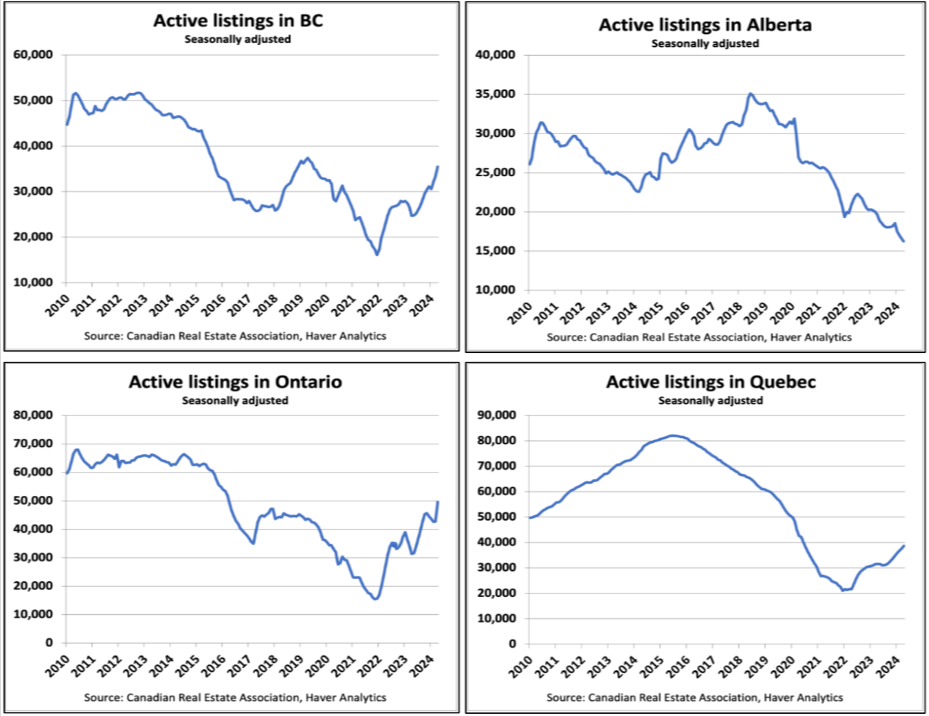
New Listings
In April, the housing market saw an influx of new listings. The seasonally adjusted number of new listings increased by 2.8% from month to month (m/m), which is the largest monthly increase since last September. On an annual basis (y/y), new listings grew by 35%.
April was the strongest month in terms of new listings, non-seasonally corrected, since June 2022. This rise in listings follows a significant shortage over the last year. The market usually experiences some degree of fluctuation. “churn,”The supply of new listings fluctuates at a mean level and often overcorrects in response to previous shortages. Edge Realty Report says that given the current dynamics and the pent-up pressure to sell, new listings will remain at high levels throughout the remainder of the year.
The report attributed a significant portion of this recent rise in new listings to an increase in completions of residential properties – specifically homeowner completions – which showed a marked increase in the availability of condos and single-family homes. This trend is expected to continue due to the number of houses still under construction.

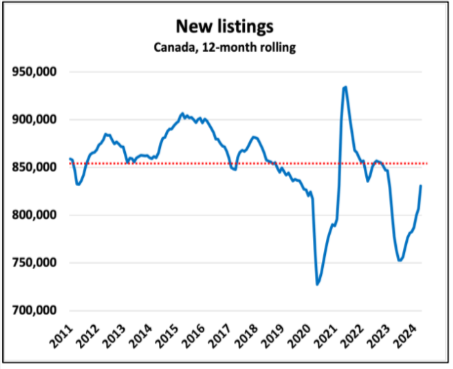
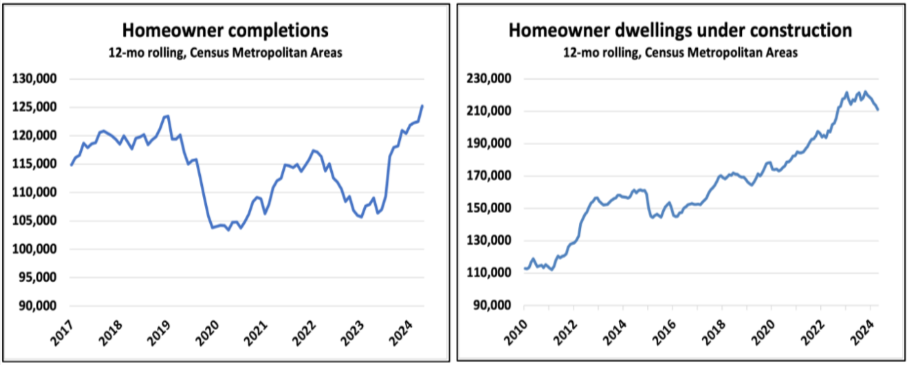
Source: Edge Realty Analytics
Source: Edge Realty Analytics derived from CMHC Numbers
Sales
In April, the seasonally adjusted monthly home sales fell by 1.7% (m/m), a reflection of a general market decline. This decline was most pronounced when it came to Ontario, where the sales volume decreased by 2.9% month-over-month. Ontario has seen a drop in sales of 12% over the past three-month period.
Despite some experts being optimistic about a robust spring market, these actual figures are not positive, especially during the spring which is typically such a crucial period for the market’s momentum for the rest of the year.
With the decrease in housing demand and the increase in housing supply, the balance on the housing market has shifted. The number of months’ inventory, which shows how long it will take to sell current inventory at current sales pace, is at its highest level since 2020.
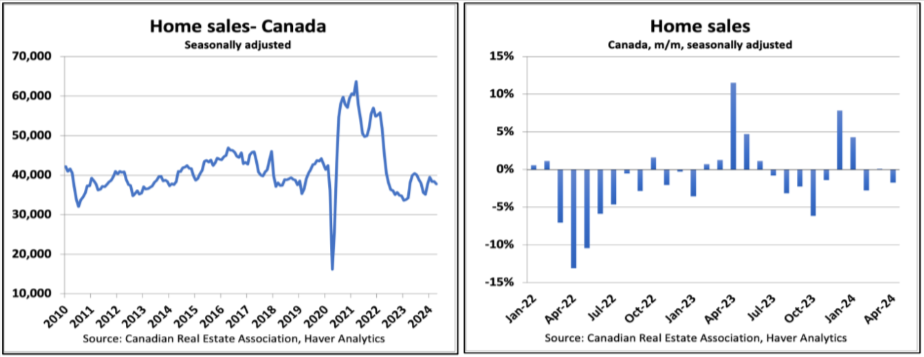
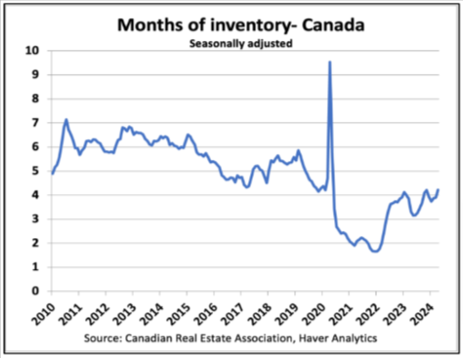
Prices are a little higher than usual.
The MLSⓇ House Price Index (HPI) remained steady in April. The three- to six months lag in price movements reflecting market conditions could lead to a renewed downward pressure this summer on prices if the current trends continue, including an increase in inventory.
Regional data showed varying trends in different parts of the country. In April, many of Ontario’s major metropolitan areas saw a positive price trend, while BC saw a decrease in prices.
Nationally, prices of houses are still 13% lower than their peak levels. In some Ontario metropolitan areas, the decline has been even more dramatic, with prices falling by over 20% and, in real-terms, after inflation, by more than 30%. This is a sign of a significant decline and an adjustment period that has been historically long for certain regions.
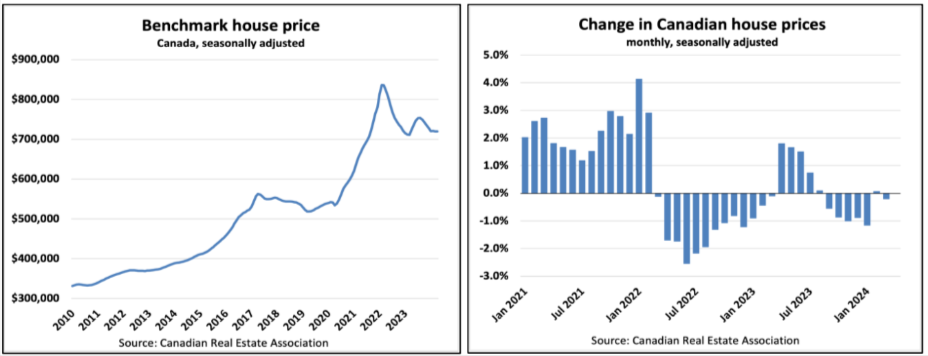
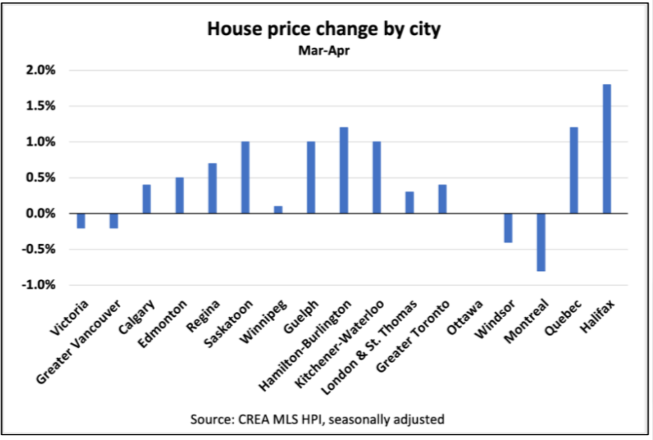
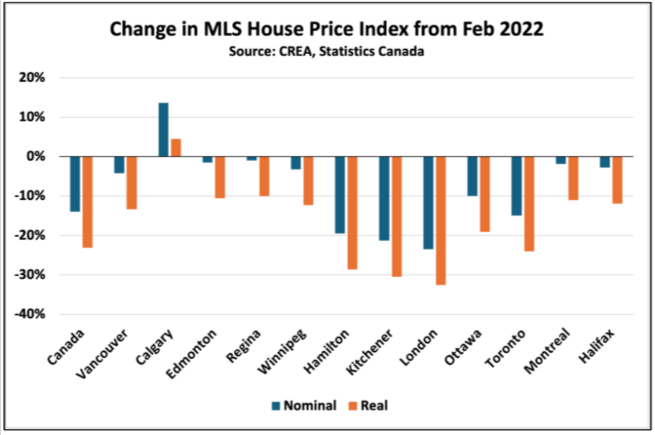
Source: Edge Realty Analytics
Summary of April 2024 Key Housing Data
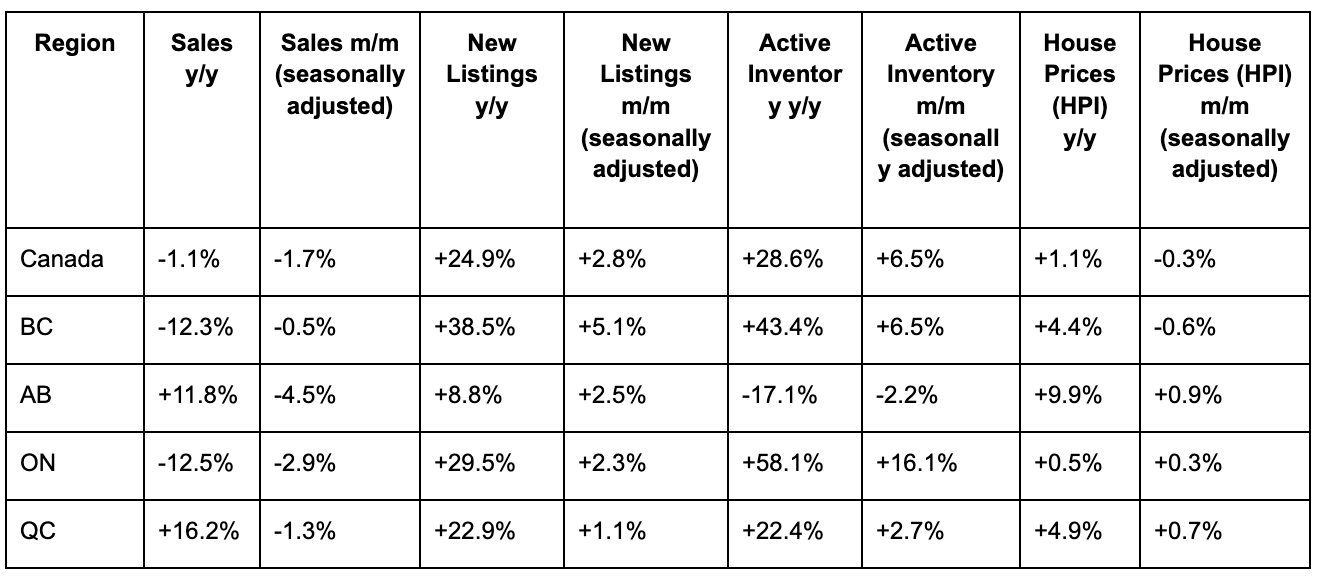

‘ Credit:
Original content by www.canadianrealestatemagazine.ca – “Housing Inventory Surges In April”
Read the full article here https://www.canadianrealestatemagazine.ca/news/housing-inventory-surges-april/




